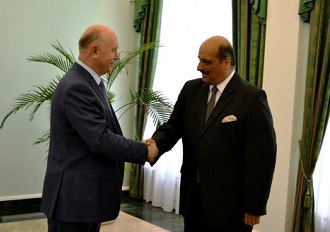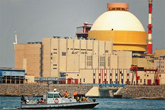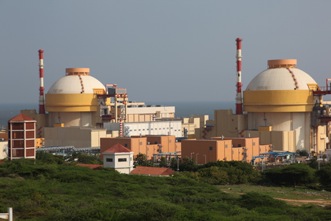Nuclear power trust bounces back to pre-Fukushima level

The global forecast for the construction of nuclear power plants by 2030 has returned to the pre-Fukushima level. Source: Reuters
When Russian President Vladimir Putin met Indian Prime Minister Manmohan Singh in Moscow for their annual summit last month, they were informed online of the long-awaited connection of the first unit of the Kudankulam Nuclear Power plant to the grid. It was a moment of rejoicing for the two countries which have made civil nuclear energy as the frontier area of their strategic partnership.
The joint statement struck an upbeat note, saying the two parties agreed to take all the necessary steps to complete the construction of the second unit. They also agreed to complete the General Framework Agreement and to prepare technical and commercial proposal for the 3rd and 4th units of the same plant “at an accelerated pace”. They reaffirmed the commitments undertaken in previous agreements on cooperation in the construction of additional power units at the Kudankulam site, and in the construction of nuclear power plants based on Russian designs at new sites in India.
It may have escaped notice, but in a curious symbolic coincidence, the test connection of the NPP Kudankulam to the grid coincided not only with the Russian-India summit, but with other important developments, showing an increasing level of confidence in nuclear energy that suffered a severe setback in the aftermath of the 2011 Fukushima radiation disaster.
Here are some examples: the UK government and French EDF Group reached an agreement on conditions for the construction of two new nuclear power units of the Hinkley Point C NPP on the British Isles. The Office of Nuclear Regulation of the UK has issued a site suitability license for the construction of a NPP for the first time in 20 years. London has allowed Chinese corporations not only to invest in its nuclear power industry, but also to own the majority stakes in companies operating the NPPs that will be constructed in Britain.
In China itself, ending the post-Fukushima moratorium on the construction of new nuclear plants, the active phase of work on the construction of the third and fourth units began on the site of the Tianwan NPP, next to the two already operating VVER-1000 reactors that were built, based on the same Russian design as in Kudankulam. Thus, the high reputation of Russian nuclear technology and the demand for design solutions that had passed the test of time were once again confirmed.
There was more positive news to report: the construction of the first nuclear power plant was started in Belarus, where, following the example of India and China, they preferred Russian nuclear technologies. The plan to construct a nuclear power station in neighbouring Lithuania – in place of the Ignalina NPP, which was stopped at the request of the European Union, gathered apace. Recently, it was reported that the Ministry of Economy of Poland approved a programme for the development of nuclear energy.
In early October, the head of Rosatom Sergey Kirienko and Bangladesh Prime Minister Sheikh Hasina opened the construction site at the Ruppur Nuclear Power Plant, which would be the first in this Asian country. The preparatory work at the site is scheduled to begin in early 2014, and the starting of the main phase is scheduled for 2015. Two power units with VVER reactors with the total capacity of more than 2 gigawatts will be built in Bangladesh. The Information Center for Nuclear Energy State Corporation Rosatom has opened its office in Dhaka to create public awareness about the nature of the nuclear industry operation and the development of the nuclear energy. In Finland, the Fennovoima Concern selected Rosatom as a supplier of nuclear technology for a new Hanhikivi-1 Nuclear Power Plant. Besides, just days after the first connection of the Kudankulam NPP to the grid, it became known that the Russian proposal was given preference in the international tender for the construction of the first NPP in Jordan.
In other words, the last days of 2013, after the first unit of Kudankulam was started, fittingly rebutted sceptics who predicted a fast decline of nuclear power and who wittingly or unwittingly fuelled the protests of residents living near the new nuclear generation projects. Relying on the same factual logic, Sergey Kirienko underlined that the global forecast for the construction of nuclear power plants by 2030 has returned to the pre-Fukushima level.“It is clear that this forecast does not include Germany, Japan and several European countries. However, there is Great Britain, which was not there before Fukushima,” said Kirienko at the “Nuclear Facilities, Society and Security” Forum at the end of October in St. Petersburg. A few days later, the same idea was accentuated by the international congress “AtomEco 2013” in Moscow. Kirienko has assured that all nuclear power plants being constructed in Russia and abroad based on Russian design adhered to the post-Fukushima safety requirements.
All rights reserved by Rossiyskaya Gazeta.
Subscribe
to our newsletter!
Get the week's best stories straight to your inbox


